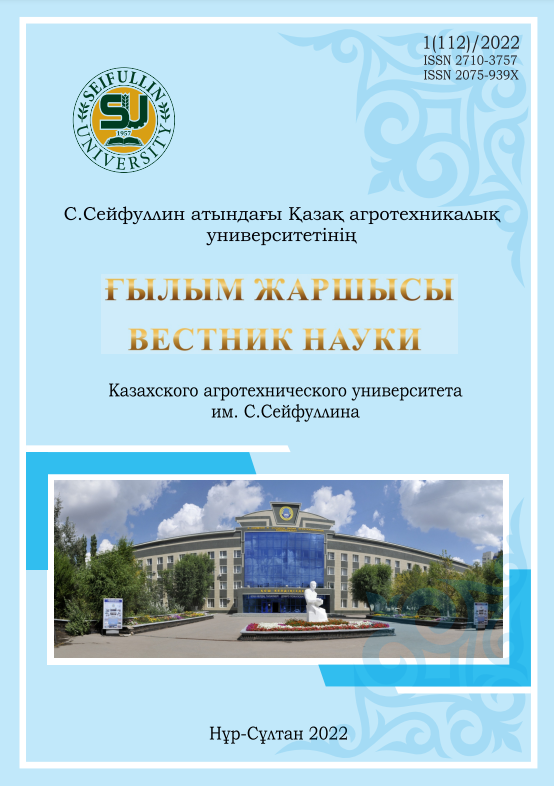PRODUCTIVITY OF SPRING TRITICALE IN THE CONDITIONS OF THE DRY STEPPE OF THE NORTH OF KAZAKHSTAN, DEPENDING ON THE TIMING OF SOWING, SEEDING RATES AND DOSES OF MINERAL FERTILIZERS
DOI:
https://doi.org/10.51452/kazatu.2022.1(112).898Keywords:
Spring triticale, variety, sowing dates, seeding rates, doses of mineral fertilizers, agrotechnical background, productivity.Abstract
When developing ecologically balanced, resource-saving systems in the north of Kazakhstan that contribute to an effective increase in the production of grain for fodder purposes, along with traditional crops, a special place should be given to the search for new fodder crops. In this regard, an unconventional crop – spring triticale - is of great interest for the agricultural production of this region. Spring triticale is a multi-use culture. Spring triticale grain is used for fattening livestock and poultry. It can be used for the production of flour and baking confectionery, starch, alcohol, but the main direction of this culture is its use for fodder purposes. Many issues of agricultural technology of spring triticale cultivation in the north of Kazakhstan have not yet been studied. In this regard, there is an urgent need in the region to study its biological features in conditions of different sowing periods, seeding rates, doses of mineral fertilizers. The work used the variety spring triticale Rossika selection of the NAO "Kazakh Agrotechnical University named after S. Seifullin". As a result of studying this variety under conditions of different sowing dates, seeding rates and doses of mineral fertilizers, it was found that the sowing dates have a significant impact on productivity. At the same time, it should be noted that the higher productivity of the spring triticale Rossika variety was noted both on a fertilized background and on a background without mineral fertilizers. It was found that mineral fertilizers have a significant impact on the productivity of the variety, In the experiment the highest productivity was noted against the background with the introduction of fertilizers in the late sowing period at a seeding rate of 4.0 million. germinating seeds per 1 ha, it should be noted that with late sowing on a fertilized background in the variant of the experiment with a seeding rate of 4.0 million. germinating seeds per 1 ha in the spring triticale Rossika variety, a reduction in the duration of the growing season was observed [332 words].

